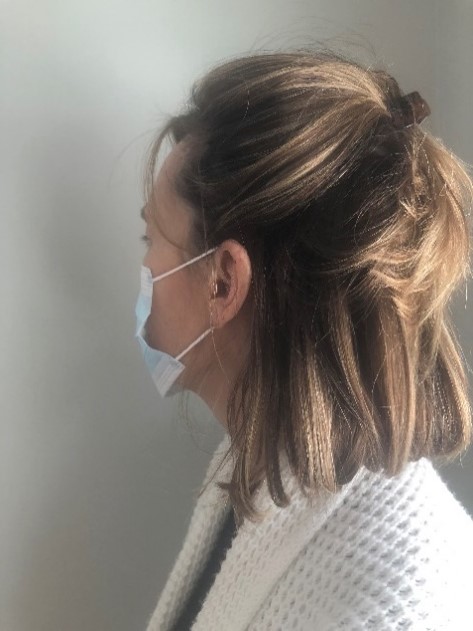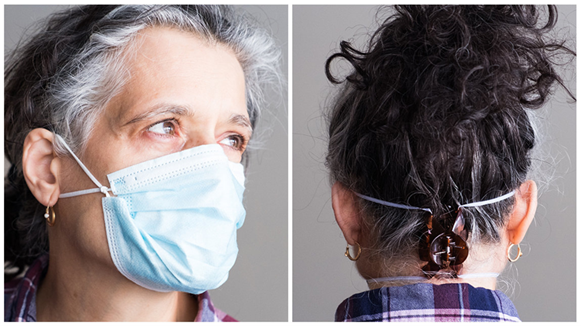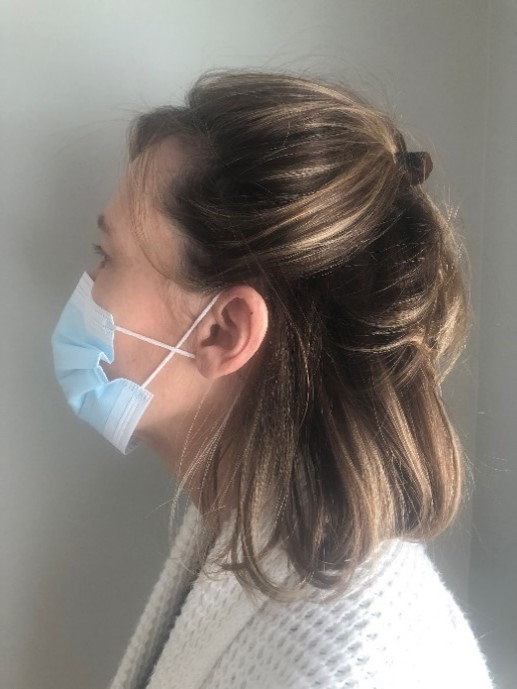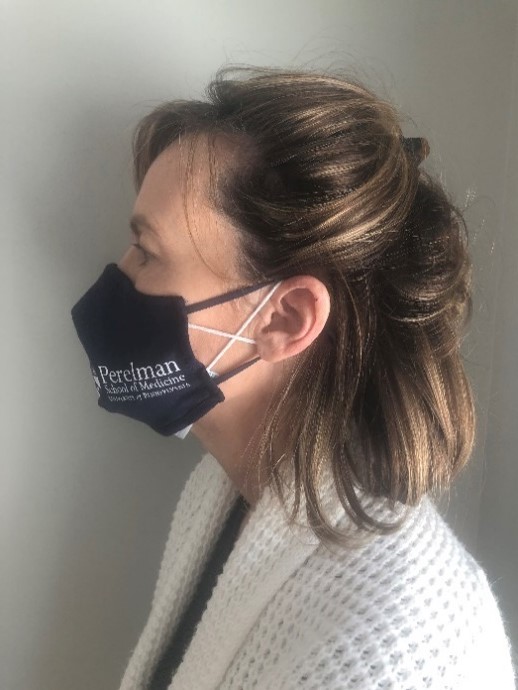Last Revised: February 12, 2021
Issued 2/10/21
CDC Guidance: Maximizing Mask Fit for Cloth and Medical Procedure Masks
CDC Guidance:Improve How Your Mask Protects You
Surgical Masks
In some instances, non-medical grade surgical-style procedure masks have a loose fit on the side of the face (Fig.1). Studies have shown improved filtration capability when the mask is brought closer to the face (CDC study below). There are several ways to close this gap. The first is to tie the ear loops close to the edge of the mask and tuck in the side pleats to minimize the gap (Fig.2). A video demonstrating this method can be viewed here. The gap can also be closed by twisting the ear loops once and tucking the pleats. Another method is to use a hair clip at the back of the head to tighten the mask to the face (Fig.3). This method can be particularly helpful if the loop is irritating the ear.


Figure 2 Figure 3
(Michele Abercrombie/NPR)
Other methods to bring the mask closer to face have been published, such as Fix-The-Mask, wrapping a nylon hosiery sleeve around the head and mask extenders. EHRS testing of these products found filtration improvement inconsistent and product placement to be awkward. Please contact Valerie Perez if you have any questions.
Double Masking
Surgical style procedure masks may not form a tight seal on all faces thus reducing the effectiveness of the mask (Fig.4). Concerns that new variants of SAR-CoV-2 may be more transmissible has emphasized the need for improved mask fit. Closing the gap on masks and double-masking, placing a cloth face covering over a surgical mask, improves the facial seal and provides a second filtration barrier (Fig.5).
In a recent report, the CDC conducted experiments to evaluate the effectiveness of double masking and knotting the ear loops of surgical procedure masks (Fig. 2), to bring the mask closer to the face.
Using a headform dummy simulator, they found that a cloth or unknotted surgical procedure mask alone blocked only 42 to 44 percent of particles released when the headform dummy coughed, but when the masks were doubled (cloth mask over a surgical procedure mask) 92.5 percent of the particles were blocked.
They continued the study by using two dummies six feet apart and either doubling the source dummies mask or knotting and tucking the sides of the surgical procedure mask and found that it reduced the exposure of the unmasked receiver by 82.2 percent and 62.9 percent respectively. When the source was unmasked and the receiver was double masked or wearing a knotted and tucked surgical procedure mask exposure was reduced 83 percent and 64.5 percent respectively. When both the source and receiver were either double masked or knotted and tucked, the receiver exposure was reduced 96.4 percent and 95.9 percent respectively. Although results may vary, this report indicates that methods to bring the mask closer to the face and reducing gaps, can improve mask performance.
Double-masking is encouraged for use at Penn, however it may not be possible for everyone. Double masking is of most value in close distance situations in the lab, when off campus where the quality of masks and proper mask wearing may be more inconsistent, and when commuting on public transit.
Do not double mask with two cotton face coverings or any type of respirators or masks that contain filters. This can make it difficult to breathe. The mask closest to your face must be a non-medical grade surgical-style procedure mask. The second mask, worn over the surgical-style mask, may be a Penn-branded cotton cloth face covering or any home-made or purchased face covering.
If you are not able to double mask, knotting the ear loops and tucking pleats of a surgical style procedure mask to maximize fit can reduce exposures.

